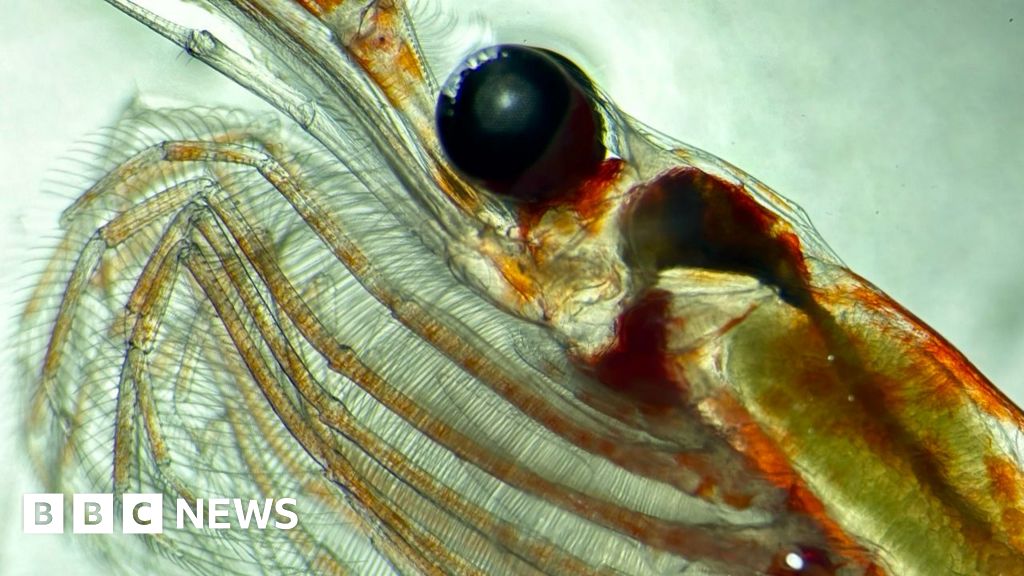A tiny, often overlooked animal, commonly sold as aquarium food, is playing a crucial role in protecting our planet from global warming. According to new research, zooplankton undertake an epic migration that locks away significant amounts of carbon, equivalent to the annual emissions of approximately 55 million petrol cars. This surprising discovery highlights the importance of these “unsung heroes” in the fight against climate change.
These small creatures gorge themselves on phytoplankton in the spring, growing fat before sinking hundreds of meters into the deep ocean around Antarctica. There, they burn off the fat, effectively sequestering carbon that would otherwise contribute to atmospheric warming. This process is much more significant than scientists previously believed.
The Remarkable Role of Zooplankton
Scientists have long studied the annual migration of zooplankton in the Southern Ocean, but recent findings have forced a re-evaluation of how much carbon this region stores. Dr. Guang Yang from the Chinese Academy of Sciences describes these findings as “remarkable,” noting that they necessitate a rethink of the Southern Ocean’s role in carbon sequestration.
Dr. Jennifer Freer from the British Antarctic Survey emphasizes the underappreciated nature of zooplankton, which are often overshadowed by more charismatic Antarctic animals like whales and penguins. Yet, these small creatures have a fascinating life cycle that plays a vital role in our planet’s climate system.
Understanding the Migration
Zooplankton, such as copepods, krill, and salps, consume phytoplankton at the ocean’s surface, transforming carbon dioxide into living matter through photosynthesis. This carbon is stored as fat, which the zooplankton burn during their winter migration to the ocean’s depths. Prof. Daniel Mayor from the University of Exeter explains, “Their fat is like a battery pack. When they spend the winter deep in the ocean, they just sit and slowly burn off this fat or carbon.”
“This releases carbon dioxide. Because of the way the oceans work, if you put carbon really deep down, it takes decades or even centuries for that CO2 to come out and contribute to atmospheric warming.” – Prof. Daniel Mayor
Quantifying Carbon Storage
The research team calculated that this seasonal vertical migration pump transports 65 million tonnes of carbon annually to depths of at least 500 meters. Copepods contribute the most to this process, followed by krill and salps. This carbon sequestration is roughly equivalent to the emissions from driving 55 million diesel cars for a year, according to a greenhouse gas emissions calculator by the US EPA.
Historical data dating back to the 1920s was analyzed to quantify this carbon storage, revealing the significant impact of zooplankton on global carbon cycles. However, the scientific discovery is ongoing as researchers seek to understand more details about the migration cycle.
Field Research in Antarctica
Earlier this year, Dr. Freer and Prof. Mayor spent two months aboard the Sir David Attenborough polar research ship near the South Orkney island and South Georgia. Using large nets, they captured zooplankton for study, working in darkness under red light to avoid disturbing the animals.
“We worked in complete darkness under red light so we didn’t disturb them,” says Dr. Freer. “Others worked in rooms kept at 3-4°C. You wear a lot of protection to stay there for hours at a time looking down the microscope,” she adds.
Future Threats and Implications
Despite their critical role, zooplankton face growing threats from climate change, ocean layer disturbances, and extreme weather. Prof. Angus Atkinson warns that warming waters and commercial krill harvesting could reduce zooplankton populations, limiting the carbon stored in the deep ocean.
“If this biological pump didn’t exist, atmospheric CO2 levels would be roughly twice those as they are at the moment. So the oceans are doing a pretty good job of mopping up CO2 and getting rid of it.” – Prof. Angus Atkinson
Krill fishing companies harvested almost half a million tonnes of krill in 2020, according to the UN. While permitted under international law, this practice has faced criticism from environmental campaigners, including in the recent David Attenborough Ocean documentary.
The research, published in the journal Limnology and Oceanography, underscores the need to incorporate these findings into climate models to better forecast future warming. As scientists continue to explore the intricacies of zooplankton migration, their work remains crucial in understanding and mitigating climate change.
 Avoid These Costly Mistakes When Buying Phones, TVs, and Gadgets
Avoid These Costly Mistakes When Buying Phones, TVs, and Gadgets Chickadees Reveal New Insights into Spatial Memory Through Vision
Chickadees Reveal New Insights into Spatial Memory Through Vision Yulia Putintseva Requests Spectator Removal at Wimbledon Over Safety Concerns
Yulia Putintseva Requests Spectator Removal at Wimbledon Over Safety Concerns Exploring Canadian Cuisine: A Culinary Journey Across a Diverse Nation
Exploring Canadian Cuisine: A Culinary Journey Across a Diverse Nation STEM Immigration: Shaping Diversity in the U.S. Workforce
STEM Immigration: Shaping Diversity in the U.S. Workforce